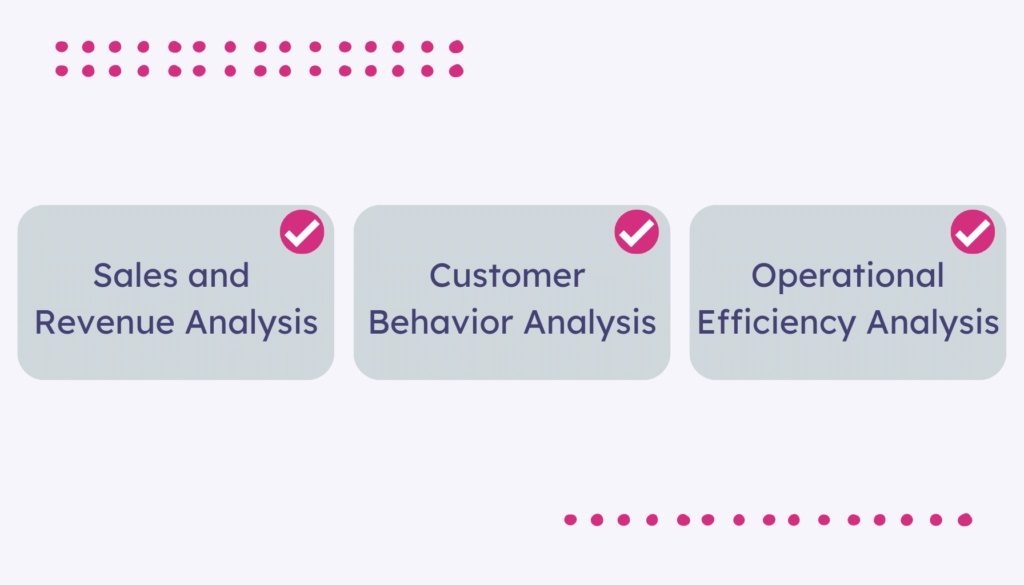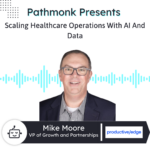
Data analysis has become an integral part of modern businesses, driving informed decision-making, identifying trends, and uncovering valuable insights. However, traditional data analysis approaches often require technical expertise and coding skills, making it challenging for non-technical professionals to harness the power of data. But with no code data analysis, the discipline is accessible to all levels of expertise.
No code data analysis refers to the use of tools and platforms that eliminate the need for complex coding and technical know-how, allowing professionals to analyze data efficiently and independently. It empowers individuals without a strong technical background to derive meaningful insights from their data, enabling them to make data-driven decisions with confidence.
We’ll explore the concept of no code data analysis and why your business needs it.
Understanding No Code Data Analysis
In the realm of data analysis, no code data analysis refers to the practice of performing complex analytical tasks and deriving insights from data without the need for traditional programming or coding skills. It provides you, regardless of your technical background, with user-friendly tools and platforms that simplify the data analysis process.
No code data analysis stands in contrast to traditional data analysis approaches that typically involve writing code in programming languages such as Python or R. With no code data analysis, the emphasis is on visual interfaces, drag-and-drop functionality, and intuitive workflows that allow users to interact with data directly and perform analysis tasks without writing a single line of code.
Understand your customer journey analytics
See how your users behave, find drop-offs, and receive actionable insights with AI.

One of the primary advantages of no code data analysis is its accessibility. By eliminating the coding barrier, it opens up data analysis capabilities to a broader audience. This accessibility empowers individuals throughout an organization to independently explore and analyze data, promoting a data-driven culture across the business.

Additionally, with simplified workflows and intuitive interfaces, users can swiftly perform data transformations, aggregations, visualizations, and statistical analyses. This efficiency and speed will enable you to make timely decisions based on the most up-to-date information, staying agile in dynamic market conditions.
Limitations of No Code Data Analysis
Despite its numerous benefits, some no code data analysis tools also have certain limitations that should be considered. It’s important to be aware of these limitations to make informed decisions when implementing and relying on no code data analysis.
Here are some key limitations to keep in mind:
- Customization and Flexibility: No code data analysis tools typically provide predefined functions, templates, and workflows. While these can be effective for common analysis tasks, they may not offer the same level of flexibility and customization as traditional coding approaches. Complex or unique analysis requirements may be challenging to address within the constraints of a no-code platform.
- Advanced Analytics Capabilities: No code data analysis tools often prioritize ease of use and accessibility, which means they may have limitations in terms of advanced analytics techniques or complex statistical modeling. If your analysis requires sophisticated algorithms or custom models, a traditional coding approach may be more suitable.
- Data Scalability and Performance: No-code platforms may face limitations in handling large volumes of data or performing computationally intensive tasks. The scalability and performance of these tools depend on their underlying infrastructure and architecture. If you’re dealing with big data or complex analysis scenarios you may need to consider the scalability and processing capabilities of no-code platforms.
- Learning Curve and Skill Limitations: While no code data analysis aims to make data analysis accessible to non-technical users, there is still a learning curve involved. Users need to familiarize themselves with the specific tools, interfaces, and workflows of the chosen platform. Additionally, certain analysis tasks may require a foundational understanding of data concepts and statistical techniques to interpret and draw accurate conclusions from the results.
- Platform Limitations and Vendor Lock-In: Each no code data analysis platform comes with its own set of features, limitations, and dependencies. You should carefully evaluate the platform’s compatibility with your data sources, integration capabilities, and long-term support. Vendor lock-in can be a concern if switching to another platform becomes challenging due to data format constraints or lack of interoperability.
3 Practical Use Cases of No Code Data Analysis
1. Sales and Revenue Analysis
No code data analysis platforms empower you to explore sales and revenue data without the need for coding expertise. Through user-friendly interfaces and pre-built functions, you can easily access, visualize, and analyze sales and revenue datasets. This accessibility allows you to gain a comprehensive understanding of key performance indicators (KPIs) such as sales volume, revenue growth, and profit margins.
These tools will allow you to identify patterns and trends within your sales and revenue data. By applying statistical analysis and data visualization techniques, you can uncover valuable insights about customer segments, purchasing patterns, and factors that influence sales performance. These insights inform strategic decision-making, enabling you to target specific customer segments, identify growth opportunities, and optimize your sales strategies.
2. Customer Behavior Analysis
Understanding customer behavior is vital to tailoring marketing efforts effectively and enhancing customer experiences. No code data analysis platforms provide user-friendly tools to analyze customer data, such as purchase history, browsing behavior, and demographic information. You can use these platforms to perform segmentation analysis, identify customer preferences, and understand the factors that influence customer buying decisions. By gaining a deeper understanding of customer behavior, you can optimize marketing campaigns and tailor your offerings to meet customer needs effectively.
3. Operational Efficiency Analysis
No code data analysis platforms enable you to analyze operational data and identify areas for improvement. By leveraging visualizations and analytics tools, you can assess operational metrics, such as production cycles, inventory levels, and resource allocation. This analysis helps identify bottlenecks, inefficiencies, and areas where process optimization can drive cost savings and enhance overall efficiency.

The Impact of No-Code Data Science on the Role of Data Scientists
No-code data science platforms have sparked discussions about the future of data scientists and their role in the evolving landscape of data analysis. Contrary to concerns that data scientists who know how to code will become obsolete, the rise of no-code platforms actually presents new opportunities and expands the scope of their work.
No-code platforms, despite their name, are built using underlying code. This means that data scientists who possess coding skills can leverage their expertise to contribute to the development of these platforms. They can work for companies that create no-code solutions, using their knowledge and subject matter expertise to enhance the field by designing and refining powerful tools that provide data science capabilities to a wider audience.
Skilled data scientists can harness no-code data science platforms to process data more efficiently than traditional coding approaches. These platforms enable them to streamline data processing, refine their logic, and generate a greater volume of data-related projects. Additionally, they can test data-driven solutions swiftly and iteratively without committing extensive resources until the viability of a project has been proven.
A significant advantage of no-code data platforms is their ability to automate tedious tasks that often lead data scientists to feel overwhelmed or dissatisfied with their roles. Mundane and repetitive tasks, which are an inherent part of data science work, can be efficiently handled by no-code systems. This increased focus on high-value work allows them to drive innovation, develop advanced models, and extract deeper insights from data, ultimately delivering more value to their organizations.
Conclusion
No-code data analysis platforms have empowered non-technical users and business professionals to access, analyze, and visualize data without the need for coding expertise. This accessibility has opened up new avenues for businesses to leverage data and gain valuable insights. Sales and revenue analysis using no-code tools will allow you to uncover patterns, identify customer segments, and discover growth opportunities.
Customer behavior analysis enables personalized marketing efforts and enhanced customer experiences by analyzing data on preferences and behavior patterns. Operational efficiency analysis using no-code data analysis will help you optimize processes, identify inefficiencies, and streamline operations to reduce costs and improve productivity.
While no-code data analysis offers numerous benefits, it’s essential to recognize its limitations, such as limited customization and scalability for advanced analytics. Nonetheless, no-code platforms augment the role of data scientists and provide them with new opportunities to contribute their expertise in developing innovative solutions.








